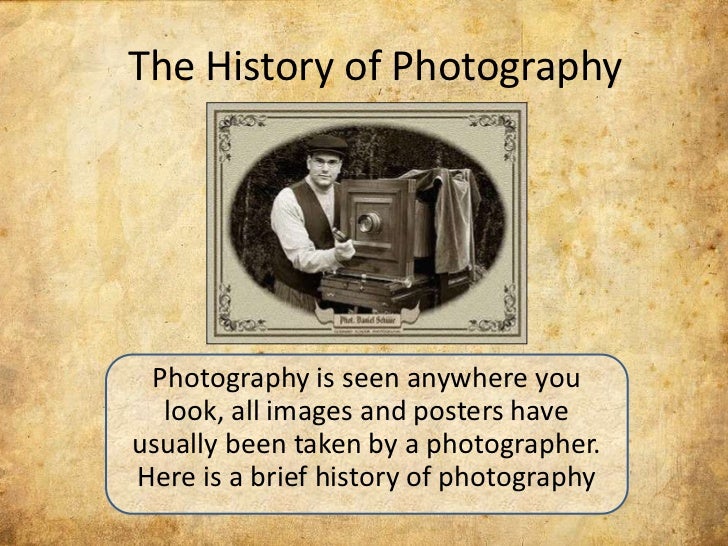For the many photography is just a word that describes the art of taking photos, i cannot lie most people do not understand how far and what just photography means. In this case am going to take you through a brife story of photography.
HISTORY
The history of photography has roots in remote antiquity with the discovery of two critical principles, that of the camera obscura
image projection and the fact that some substances are visibly altered
by exposure to light, as discovered by observation. Apart from a very
uncertain process used on the Turin Shroud
there are no artifacts or descriptions that indicate that anyone even
imagined capturing images with light sensitive materials before the 18th
century. Around 1717 Johann Heinrich Schulze captured cut-out letters on a bottle of a light-sensitive slurry, but he apparently never thought of making the results durable.
Around 1800 Thomas Wedgwood
made the first reliably documented, although unsuccessful attempt at
capturing camera images in permanent form. His experiments did produce
detailed photograms, but Wedgwood and his associate Humphry Davy found no way to fix these images.
 |
| photography and photos. |
In the mid-1820s, Nicéphore Niépce
first managed to fix an image that was captured with a camera, but at
least eight hours or even several days of exposure in the camera were
required and the earliest results were very crude. Niépce's associate Louis Daguerre went on to develop the daguerreotype process, the first publicly announced and commercially viable photographic process.
In the mid-1820s, Nicéphore Niépce
first managed to fix an image that was captured with a camera, but at
least eight hours or even several days of exposure in the camera were
required and the earliest results were very crude. Niépce's associate Louis Daguerre went on to develop the daguerreotype process, the first publicly announced and commercially viable photographic process.The daguerreotype required only minutes of exposure in the camera, and
produced clear, finely detailed results.The details were introduced as a
gift to the world in 1839, a date generally accepted as the birth year
of practical photography.
 |
| Joseph Nicéphore Niépce. |
 |
| Photo credits Ricky Nderitu. |
Next we will be lookig at The Past and Present of Photography Technology.



Awesome dear
ReplyDeleteNice bro
ReplyDeleteNice one bro
ReplyDeleteGreat one babe😋😋
ReplyDeleteNice one
ReplyDeletegreat insight
ReplyDelete